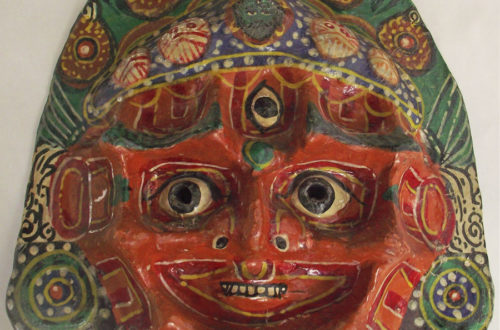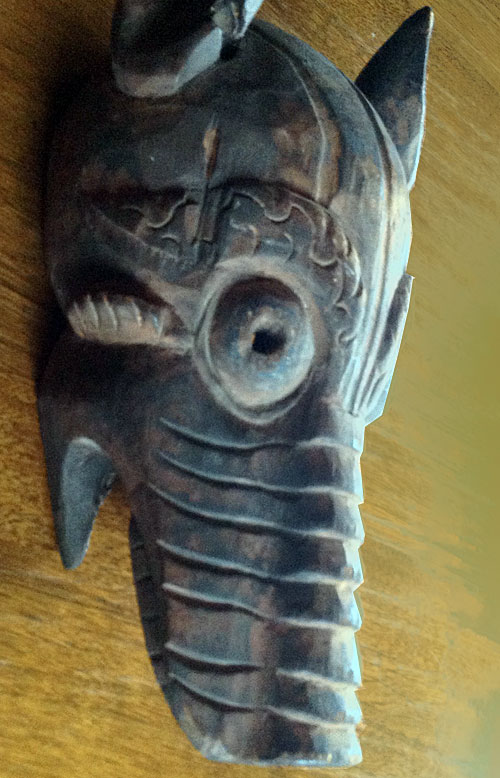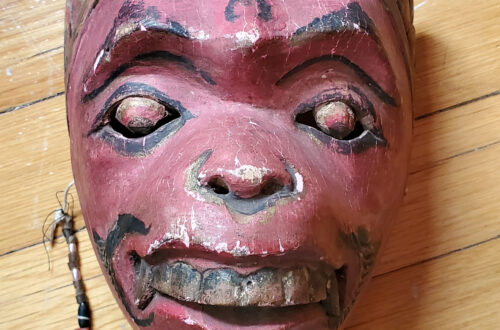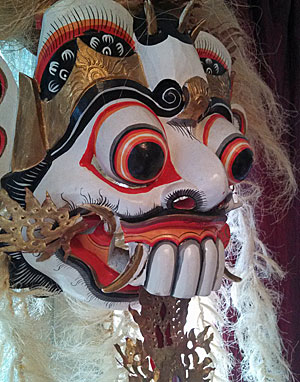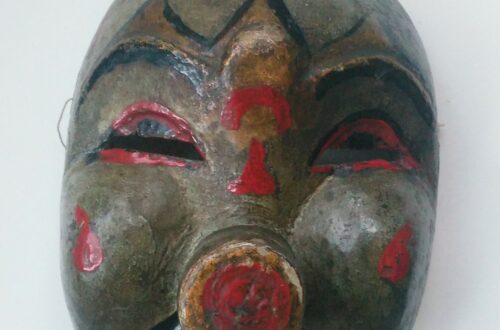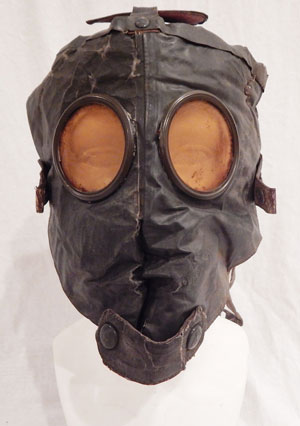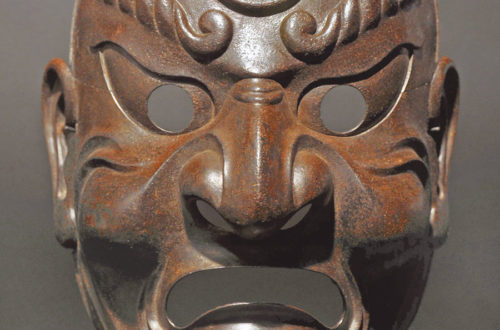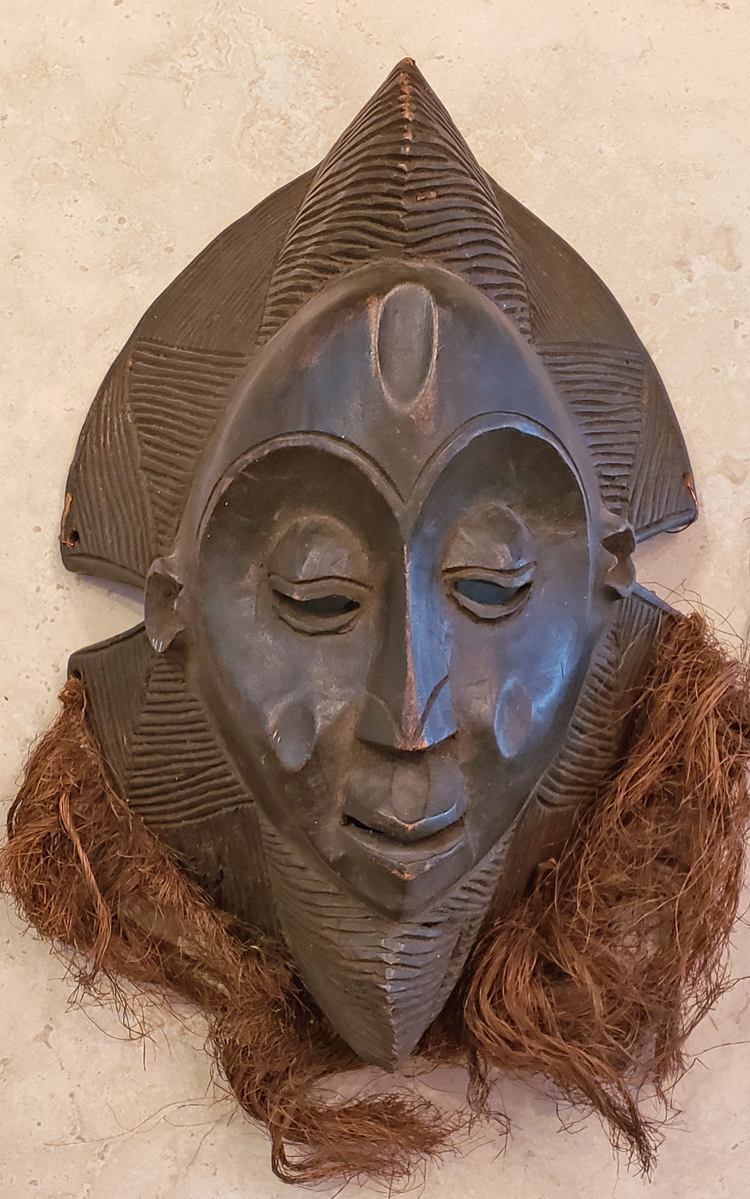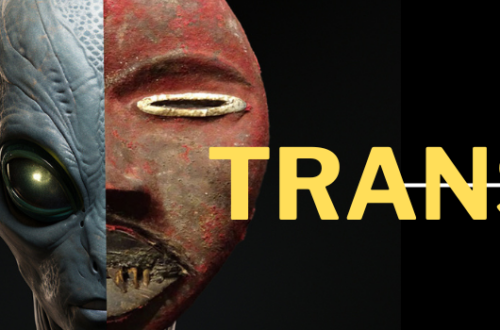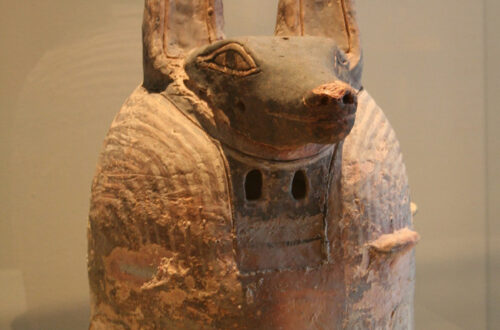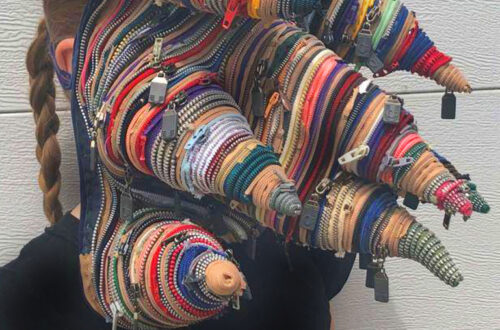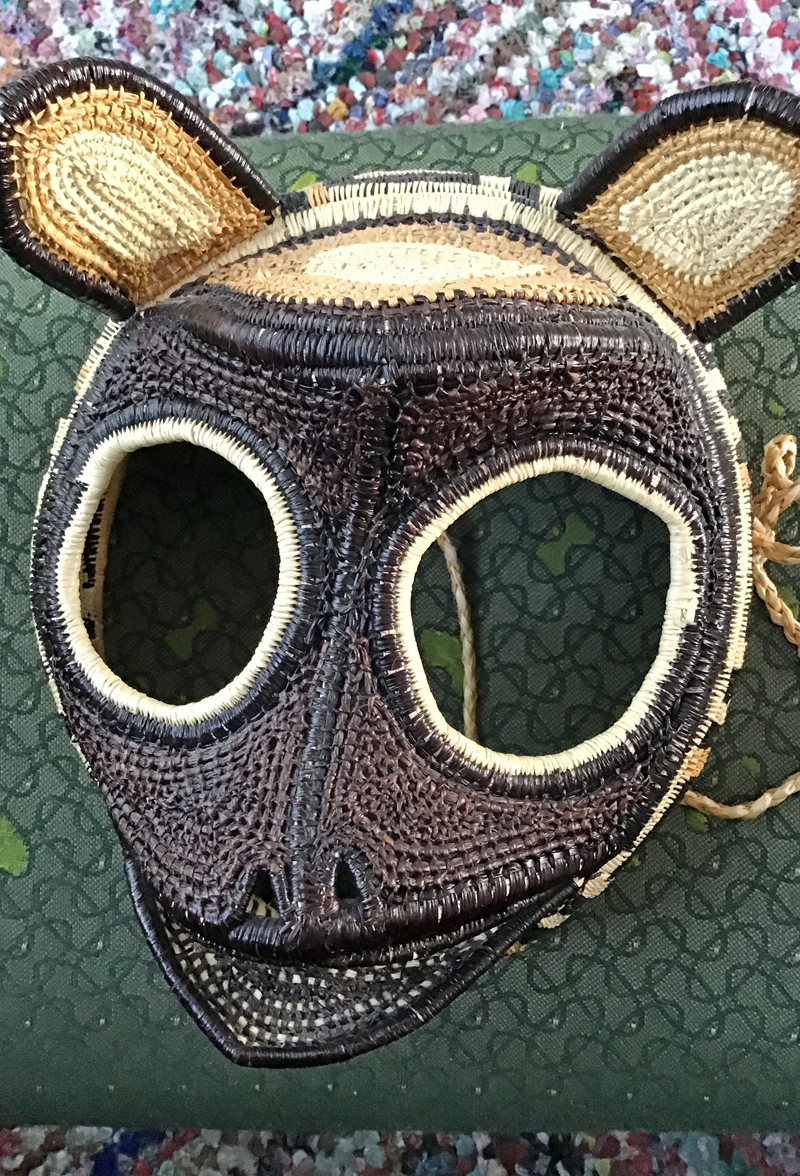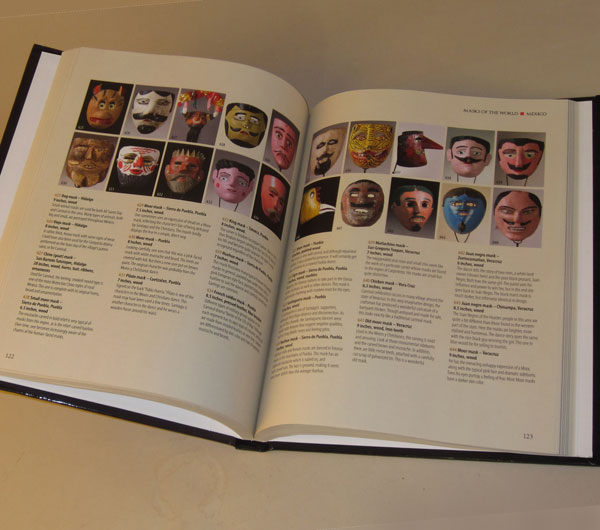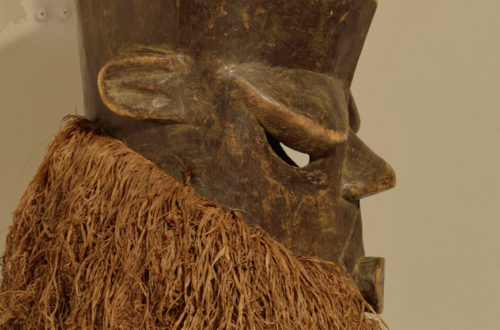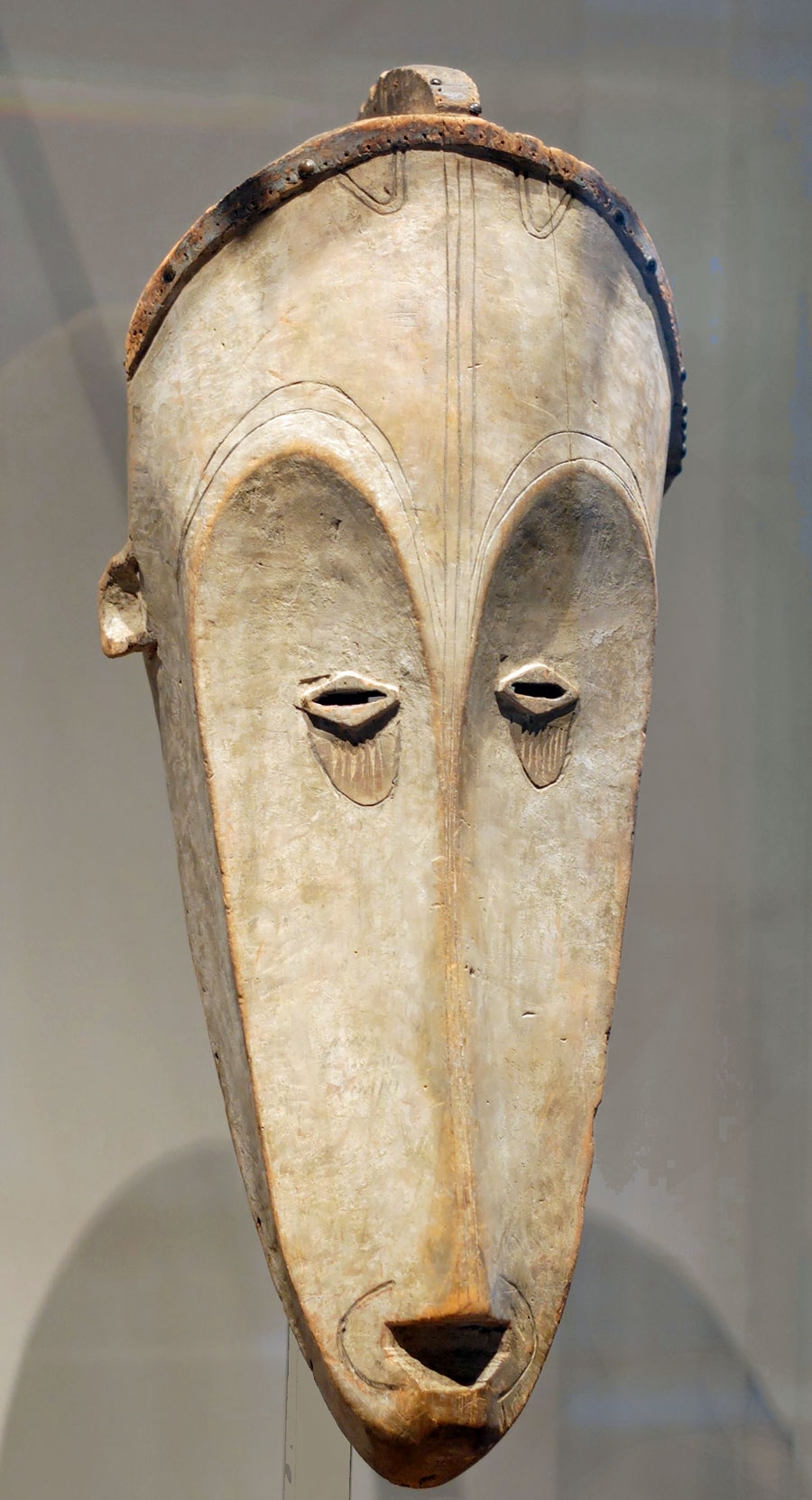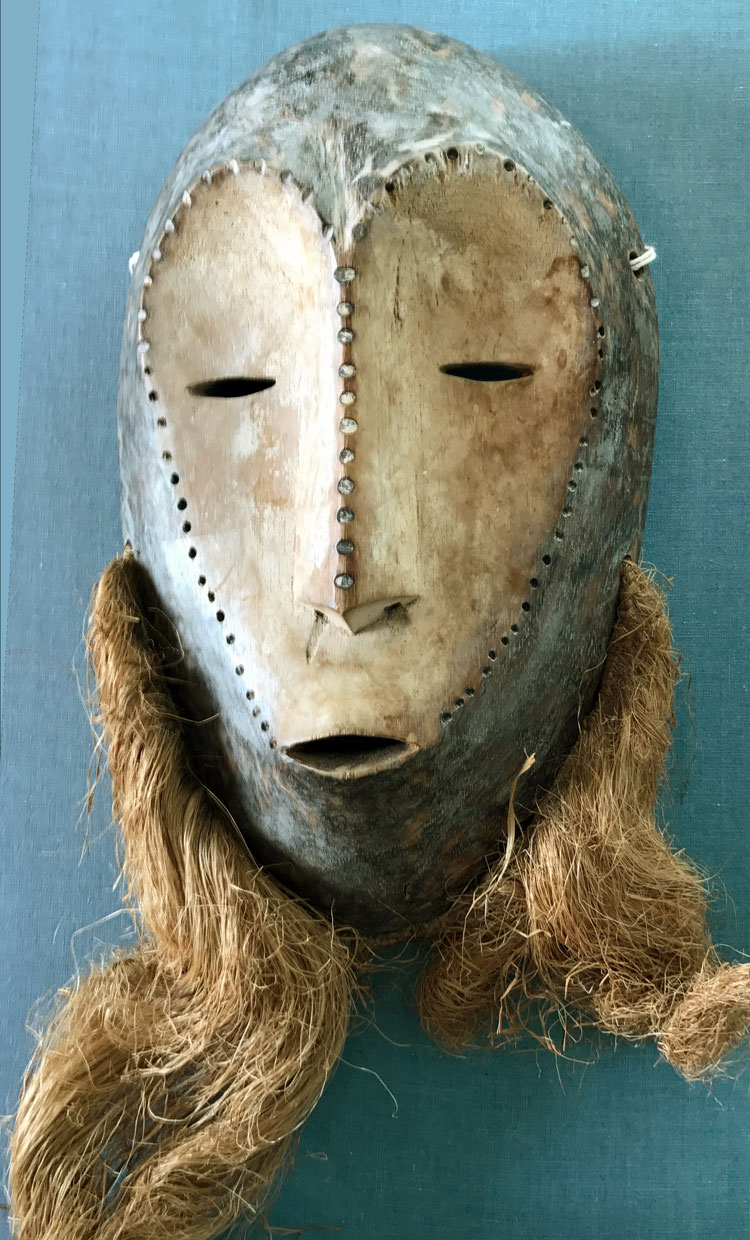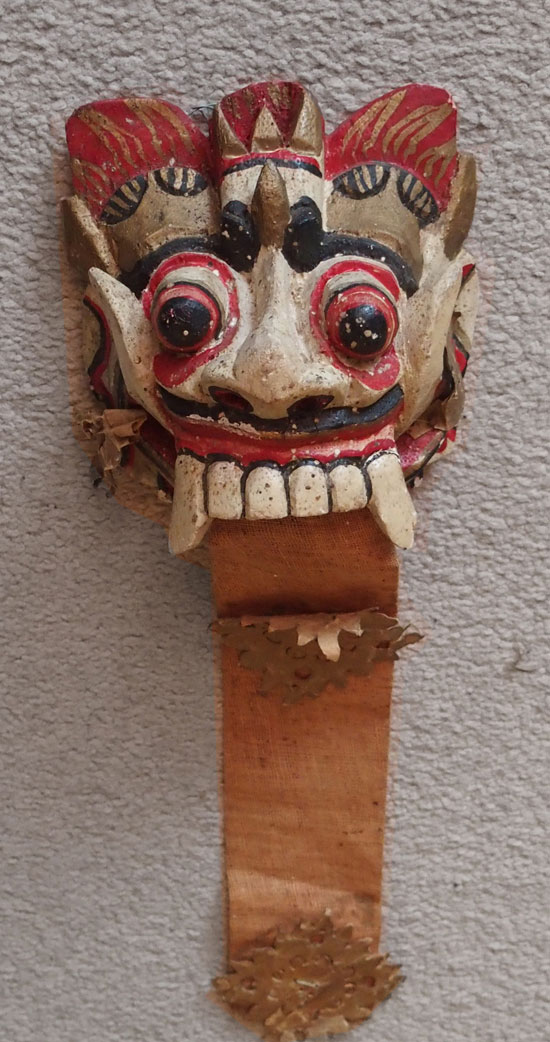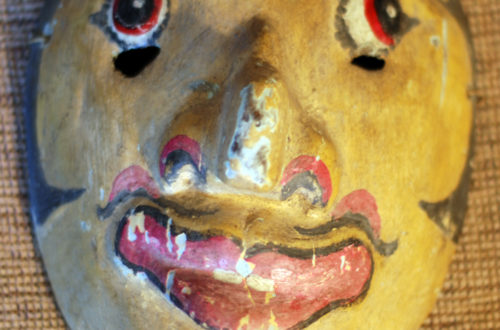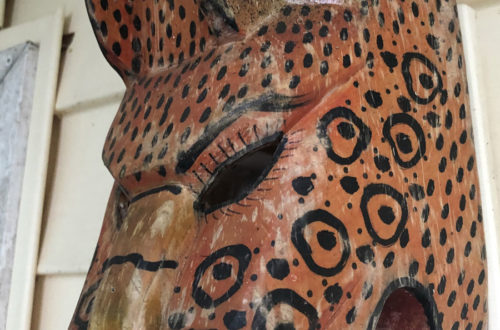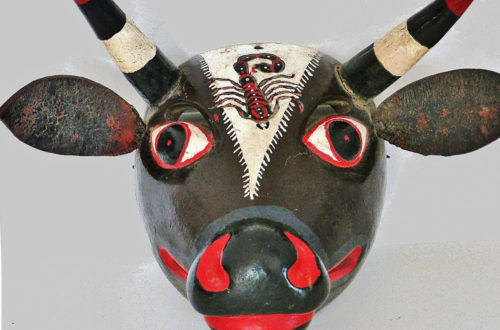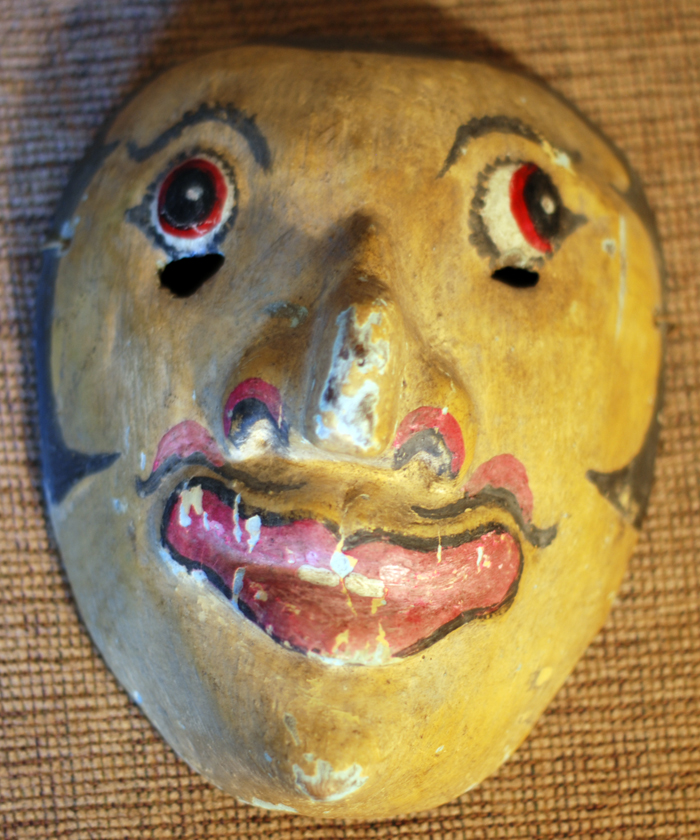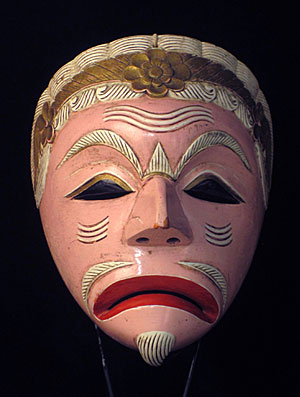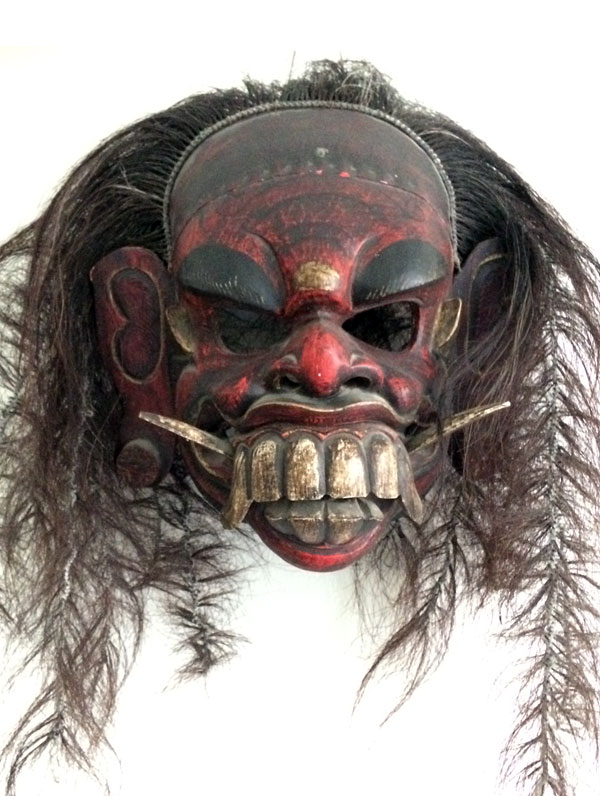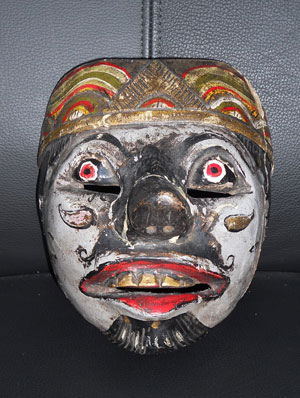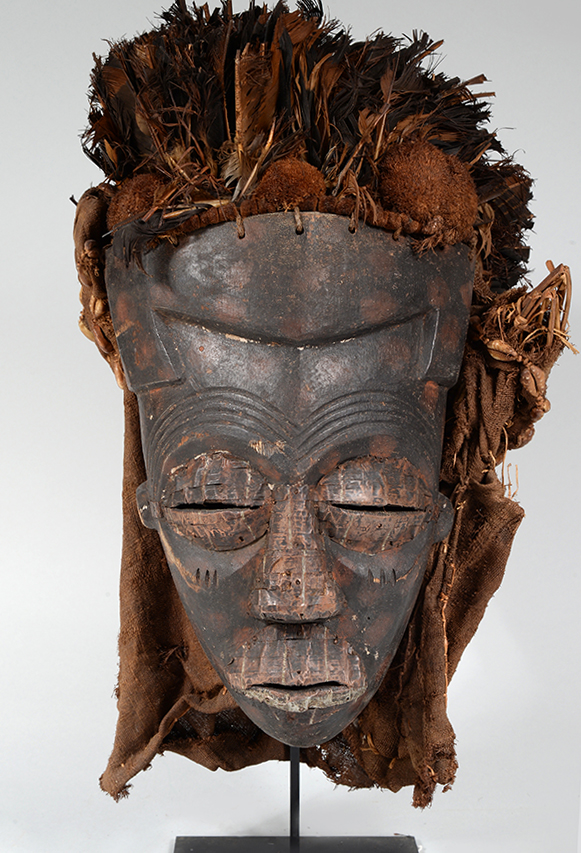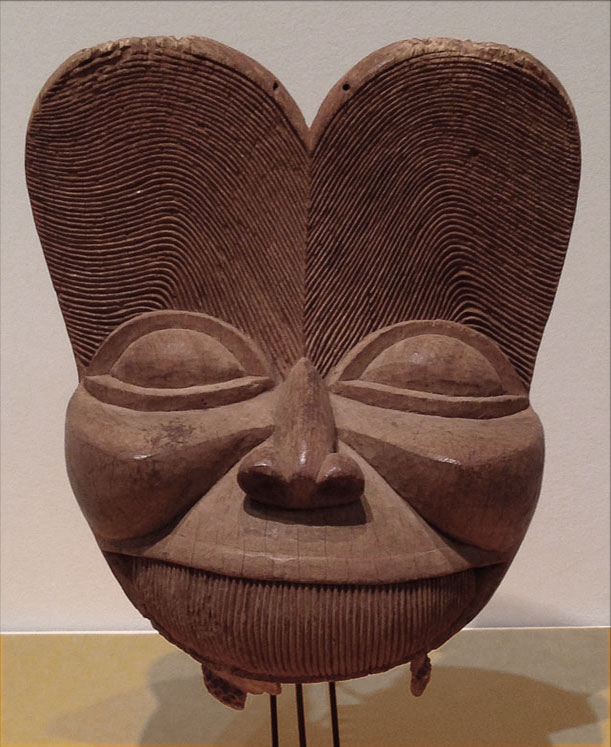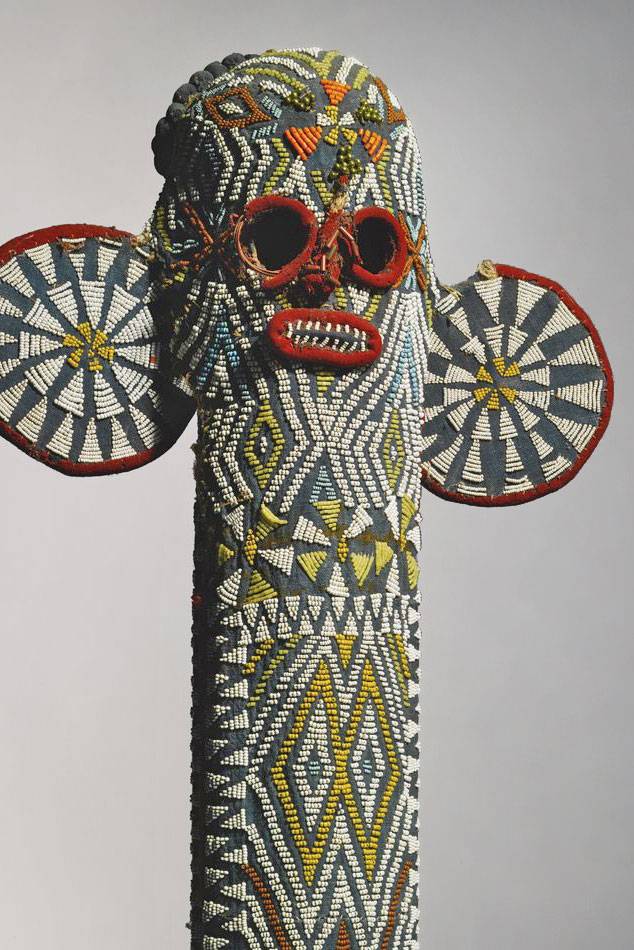Here is one of my favorite Citipati masks. As you know the are made as pairs, the male and the female which are often difficult to differentiate. It is essential that the soul be able to laugh the frightening prospect of the hereafter and so, in their wisdom, monks turn dancing skeletons into clowns for comic relief at great masked performances. I was lucky enough to manage to buy it at auction about 18 months ago. I paid less than half what I believe the mask to be worth. As you know, Himalayan masks have become very expensive, and Citipati masks are among the most favored by collectors. The mask…
-
-
Barong mask from Bali
Q: Does anyone know what kind of mask this is? Thanks! Stephanie, 1652 A: Because of its poor craftsmanship it could come from a rural village, or maybe it’s just a cheap tourist souvenir. I thought it should be posted because I’ve never seen one that looks like this. Barongs are supposed to be protective spirits that patrol the village border to sniff out dangerous demons and scare them away. The mask is worn with a very elaborate costume. Barongs are also danced in some of the traditional dramas. I’m pleased that masquerade is still widely practiced all over this Indonesian island.
-
The world’s number one mask
In today’s newspaper there is a picture of a masked person condemning the killing of an Iranian general. In back of the protestore is the US Capitol. Once again we see the famous Guy Fawkes face in the news. Since the 2005 release of the film V for Vendetta, the use of stylized Guy Fawkes masks, with mustache and pointed beard, has become widespread internationally among groups protesting against politicians, banks, and financial institutions. The mask both conceals the identity of individuals and demonstrate their commitment to a shared cause. It has been used off and on during all of the 20th century, especially on November 5th in the UK.…
-
Tourist masks
Q: I just received this mask as a gift. I was told it came from a collector in Canada, but it looks African to me. Rick, 1650 A: Many of the people who write to the Mask Man have been given a mask, found one, or bought an “old one” cheap. They are usually hoping it will be worth something. I have to disappoint them, hopefully, in a nice way. It would be better the next time if they bought tribal art for beauty rather than value. Other visitors to MasksoftheWorld are collectors and would probably not be interested in today’s blog. Rick has a mask that doesn’t resemble the…
-
Rare animal mask from Panama
Q: Would you know more about this straw mask. It reminds me of an African dog mask. Very comfortable to wear. Not sure if it represents a zebra or a monkey. Looking forward to your answer. Paule, 1649 A: I would say this mask was made by Indians from the forests of Panama, possibly the Embera or the Wounaan people. Both tribes often weave animal masks out of the same natural materials they use for baskets. I wish I could tell you what kind of animal it is. Maybe it is some kind of monkey. I hope you keep this rare mask and do some serious research. B+
-
Batshioko mask from Zambia
Q: My mother was an artist who created masks in some of her work. She had some interesting masks which she collected for design inspiration. This one is the most unusual. I’d be interested to know where it is from. Linda, 1648 A: We don’t see these very often. I’m going to assume it’s bark cloth stretched over a frame of bent twigs about 15 inches in height. Probably authentic and about 50 years old. B
-
Newer mask from urban Java
Q: Can anyone offer info on this mask? I’m thinking Javanese/Indonesian, but my knowledge is virtually nil! Phil, 1647 A: Check out the Javanese mask posted four days ago. This Topeng character mask is much more common today. When they come from prosperous communities where professional dancers performer, the masks are more carefully carved and painted than this one. B
-
Guatemalan monkey mask
Q: From reading your previous articles I believe that this is a Guatemalan monkey mask, but that is mostly a guess. The woman who I bought this from for twenty five dollars said that it is something vintage and authentic. It does look used to me, but the paint looks newer. Thank you, Deb, 1646 A: Your mask looks like it was used for awhile and then repainted, which is something the morerias often do to keep their customers happy. The initials “LIC” may be the name of the moreria. It would be nice if you could check this out. I wrote the following on this site on July 11…
-
Character mask from rural Java
Q: I have what I think is an interesting mask. I don’t know the differences between masks from Java and those from Bali though. This one looks authentic because of the signs of wear, patina, and the old leather tab for the dancer’s mouth to hold on to. I got it on eBay for forty bucks. Thanks much. Steve, 1645 A: This is a popular long-nosed character from one of the classic Topeng dance dramas. As you can see, an inch or more of the nose has been broken off. Most of the Javanese masks we see on are very skillfully made in cities, towns and nearby villages. This one…
-
Mystery Kuba mask from Central Africa
Q: I may have a mystery mask for you. The attached was labeled as a Kuba M’boom mask. It may be Kuba, but I doubt it’s a M’boom. I guess it’s possible. The front is partially covered in copper sheet. Do you have any notion what kind of mask it is? Aaron, 1644 A: The only thing that strongly suggests it might be a Kuba M’boom is the forehead area. There is also the possibility of your mask coming from other tribes in the central Congo (DRC) region such as the Lele, Bushoong, Ngeende, and some others. I know, that’s not much help. So let’s hope that sone of our…

